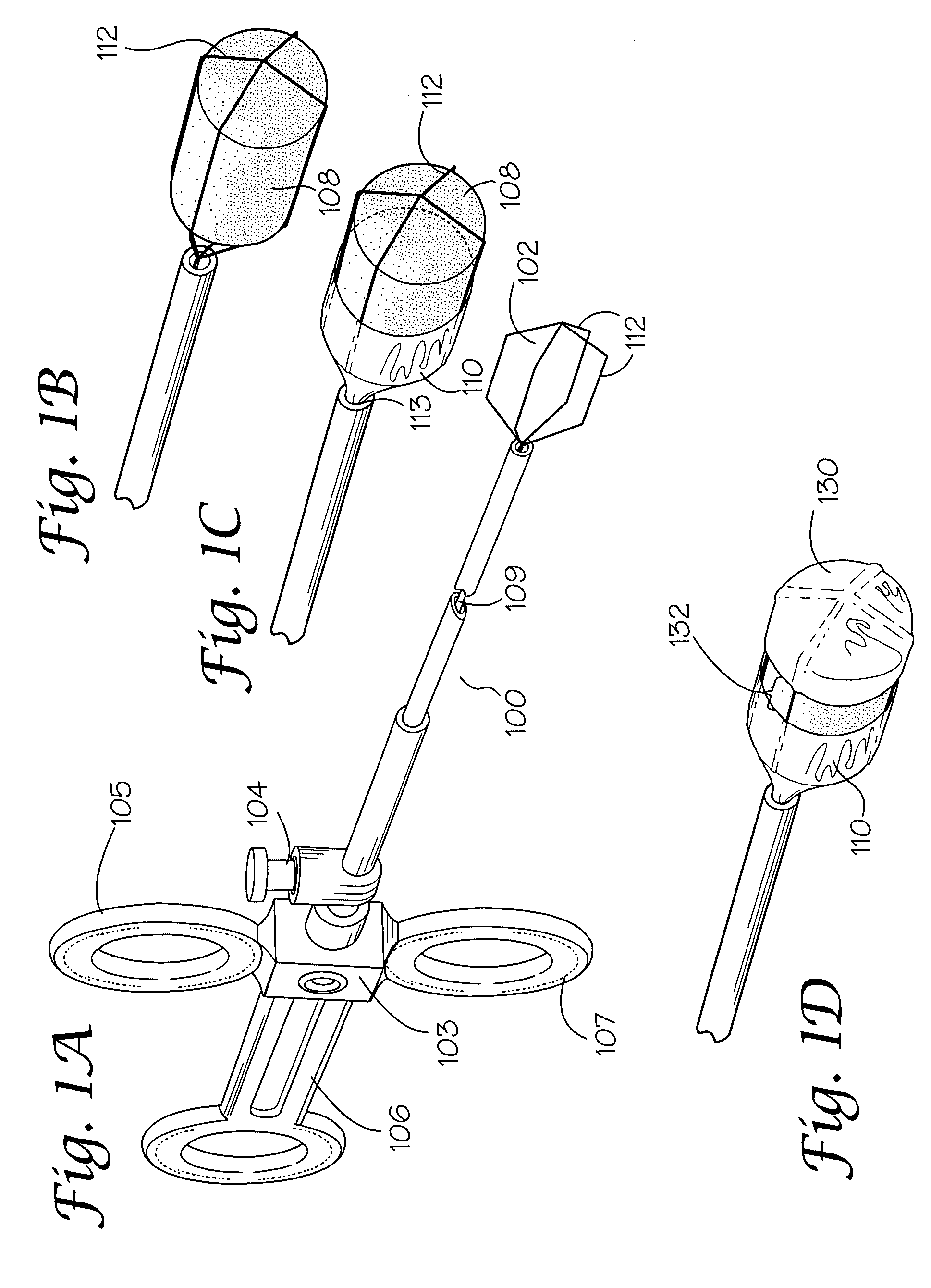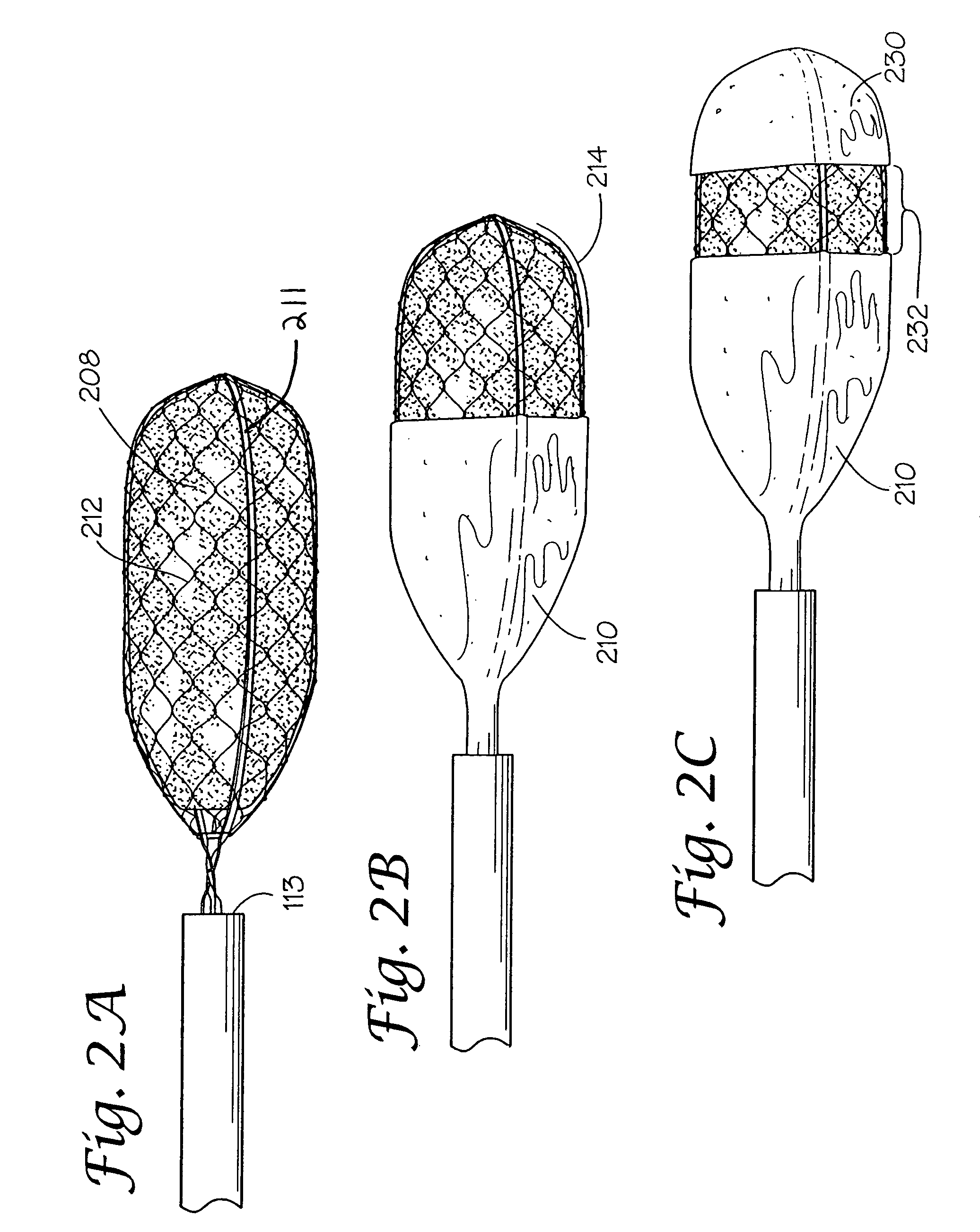Medical liquid delivery device
a liquid delivery device and liquid technology, applied in the field of medical liquid delivery devices, can solve the problems of insufficient direct pressure to achieve lasting hemostasis, insufficient direct pressure, and relatively expensive medical equipment, and achieve the effect of minimizing the spillage of liquid agents
- Summary
- Abstract
- Description
- Claims
- Application Information
AI Technical Summary
Benefits of technology
Problems solved by technology
Method used
Image
Examples
example
Use of Catheter to Treat Lesion
[0030]A lesion is identified endoscopically.[0031]The medical liquid (caustic agent) is drawn up into the syringe.[0032]The syringe is attached to the proximate end of the catheter at the injection port.[0033]The retractable device is extended beyond the outer catheter. The plunger of the syringe is gently pressed so that the medical liquid (caustic agent) fills the lumen of the (inner) catheter and soaks the liquid loadable means.[0034]The retractable device is retracted into the outer catheter.[0035]The catheter is advanced through the working channel of the endoscope so that it protrudes beyond the tip.[0036]The retractable device is extended.[0037]The liquid loadable means (LLM) is placed in contact with the lesion to be treated. The plunger of the syringe is gently pressed so that the LLM is moistened enough to allow the caustic agent to transfer from the LLM to the surface being treated.[0038]The caustic agent may be dabbed repeatedly at one or m...
PUM
 Login to View More
Login to View More Abstract
Description
Claims
Application Information
 Login to View More
Login to View More - R&D
- Intellectual Property
- Life Sciences
- Materials
- Tech Scout
- Unparalleled Data Quality
- Higher Quality Content
- 60% Fewer Hallucinations
Browse by: Latest US Patents, China's latest patents, Technical Efficacy Thesaurus, Application Domain, Technology Topic, Popular Technical Reports.
© 2025 PatSnap. All rights reserved.Legal|Privacy policy|Modern Slavery Act Transparency Statement|Sitemap|About US| Contact US: help@patsnap.com



